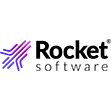

via Shutterstock
A European Union analytics initiative seeks to forge a new software architecture for what developers dub “extreme-scale” data analytics that would be applied to autonomous transportation and “smart mobility” systems.
As the name suggests, the EU’s ELASTIC (Extreme-ScaLe Big-Data AnalyticS in Fog CompuTIng ECosystems) initiative seeks to develop an agile software architecture in which computing is dynamically distributed to real-time analytics.
Launched in December 2018, the three-year, €5.9 million ($6.4 million) project is being coordinated by the Barcelona Supercomputing Center.
ELASTIC also seeks to address the shortfalls associated with real-time analytics running in the cloud. Program managers note that communications and data movement make real-time analytics difficult.
“In order to provide an improved ecosystem, which considers the full compute continuum, there is a great need for analysis and monitoring tools that support higher-level concerns and non-functional aspects in a comprehensive manner, from the edge to the cloud,” the group said.
A key component of the architecture is a “non-functional requirements” (NFR) tool designed to handle both analytics and service execution. For example, NFR would help transit managers consider “trade-offs between performance, predictability, energy efficiency, communication quality and security,” the group said. “The result of this analysis is a set of possible initial deployment configurations.”
Among the transit applications are obstacle detection and predictive maintenance. The software architecture would combine data from different sensors to help vehicles spot hazards and avoid collisions. The real-time capability would use a platform called the Next Generation Autonomous Positioning system along with the standard Advanced Driving Assistant System.
Project managers announced this week the data analytics platform will be integrated into public trams as part of a smart city effort in Florence, Italy. The goal is a 25 percent reduction in annual incidents on the Tuscan city’s tram system.
Meanwhile, the predictive maintenance capability seeks to track repair needs at an early stage to reduce operational costs and keep transit infrastructure operating for longer periods between overhauls. The predictive analytics tool is expected to result in a 30 percent reduction in standard maintenance costs.
Together, the tools support by the analytics architecture would yield a 5 percent improvement in traffic patterns as measured in terms of interactions between public transit and drivers.
Recent items:
Transit Effort Uses Robots to Gather Inspection Data
Getting Ready for Real-Time Decisioning
September 19, 2025
- EY Announces Alliance with Boomi to Offer Broad Integrated Solutions and AI-Powered Transformation
- Rice University Accelerates AI Innovation to Transform Teaching, Learning and Research
- Tigera Launches Solution to Protect AI Workloads Running on Kubernetes
September 18, 2025
- EDB Research Shows 87% of Enterprises Lag in Sovereign AI Adoption
- Zencoder Brings AI Coding to a Billion Users with Universal AI Development Platform
- PingCAP Brings Global Data Leaders Together for TiDB SCaiLE 2025 in California
- Qlik Connect 2026 Set for April 13–15 in Florida
- Domo Selected by Showpass to Deliver Scalable, Real-Time Embedded Analytics Worldwide
- Databricks Launches AI Accelerator Program to Scale the Next Generation of AI Startups
- Kennesaw State Researchers Tackling AI-Generated Fraud to Protect Data Integrity
- Salesforce Deepens Commitment to UK AI Innovation, Increases Investment to $6B
September 17, 2025
- Dynatrace Joins GitHub MCP Registry to Accelerate AI-Powered Developer Innovation
- LogicMonitor Sets New Standard for AI-First Observability with Edwin AI and Expanded Service Intelligence
- NASA Expands Access to Earth Data Through New Metadata Pipelines
- MongoDB Extends Search and Vector Search Capabilities to Self-Managed Offerings
- Gartner Says Worldwide AI Spending Will Total $1.5T in 2025
- Cohesity Extends Cyber Resilience Leadership with New Security Innovations and Partnerships
- Ataccama Opens Registration for FWRD 2025
September 16, 2025
- Inside Sibyl, Google’s Massively Parallel Machine Learning Platform
- What Are Reasoning Models and Why You Should Care
- Rethinking Risk: The Role of Selective Retrieval in Data Lake Strategies
- The AI Beatings Will Continue Until Data Improves
- Software-Defined Storage: Your Hidden Superpower for AI, Data Modernization Success
- In Order to Scale AI with Confidence, Enterprise CTOs Must Unlock the Value of Unstructured Data
- Beyond Words: Battle for Semantic Layer Supremacy Heats Up
- What Is MosaicML, and Why Is Databricks Buying It For $1.3B?
- How to Make Data Work for What’s Next
- Top-Down or Bottom-Up Data Model Design: Which is Best?
- More Features…
- Mathematica Helps Crack Zodiac Killer’s Code
- GigaOm Rates the Object Stores
- Promethium Wants to Make Self Service Data Work at AI Scale
- Solidigm Celebrates World’s Largest SSD with ‘122 Day’
- AI Hype Cycle: Gartner Charts the Rise of Agents, ModelOps, Synthetic Data, and AI Engineering
- Data Prep Still Dominates Data Scientists’ Time, Survey Finds
- MIT Report Flags 95% GenAI Failure Rate, But Critics Say It Oversimplifies
- The Top Five Data Labeling Firms According to Everest Group
- Databricks Now Worth $100B. Will It Reach $1T?
- Career Notes for August 2025
- More News In Brief…
- Seagate Unveils IronWolf Pro 24TB Hard Drive for SMBs and Enterprises
- Gartner Predicts 40% of Generative AI Solutions Will Be Multimodal By 2027
- DataSnap Expands with AI-Enabled Embedded Analytics to Accelerate Growth for Modern Businesses
- Acceldata Announces General Availability of Agentic Data Management
- Qlik Announces Canada Cloud Region to Empower Data Sovereignty and AI Innovation
- Transcend Expands ‘Do Not Train’ and Deep Deletion to Power Responsible AI at Scale for B2B AI Companies
- Pecan AI Brings Explainable AI Forecasting Directly to Business Teams
- Databricks Surpasses $4B Revenue Run-Rate, Exceeding $1B AI Revenue Run-Rate
- SETI Institute Awards Davie Postdoctoral Fellowship for AI/ML-Driven Exoplanet Discovery
- Deloitte Survey Finds AI Use and Tech Investments Top Priorities for Private Companies in 2024
- More This Just In…






































